Following his successful transatlantic expedition, kayaker Peter Bray said, “If somebody says something can’t be done, I like to know why it can’t be done, and then prove it can be.” This sentiment echoes through the motivations of some of the most extraordinary kayaking expeditions, inspiring journeys that push not just physical and mental boundaries, but also the limits of what we believe is possible.
Drawing on the nominations from more than a dozen of today’s most accomplished expedition paddlers, we’ve curated a list of some of the most remarkable journeys by double blade in the past 25 years. While few of us will ever attempt such daring trips, these stories inspire us to question our own limits and fuel the spirit of adventure.
We’ve ranked the following expeditions in reverse order, saving the best for last. What do you think? Tell us how you’d rank these expeditions and about the journeys we missed.
Greatest kayaking expeditions of the century (so far)
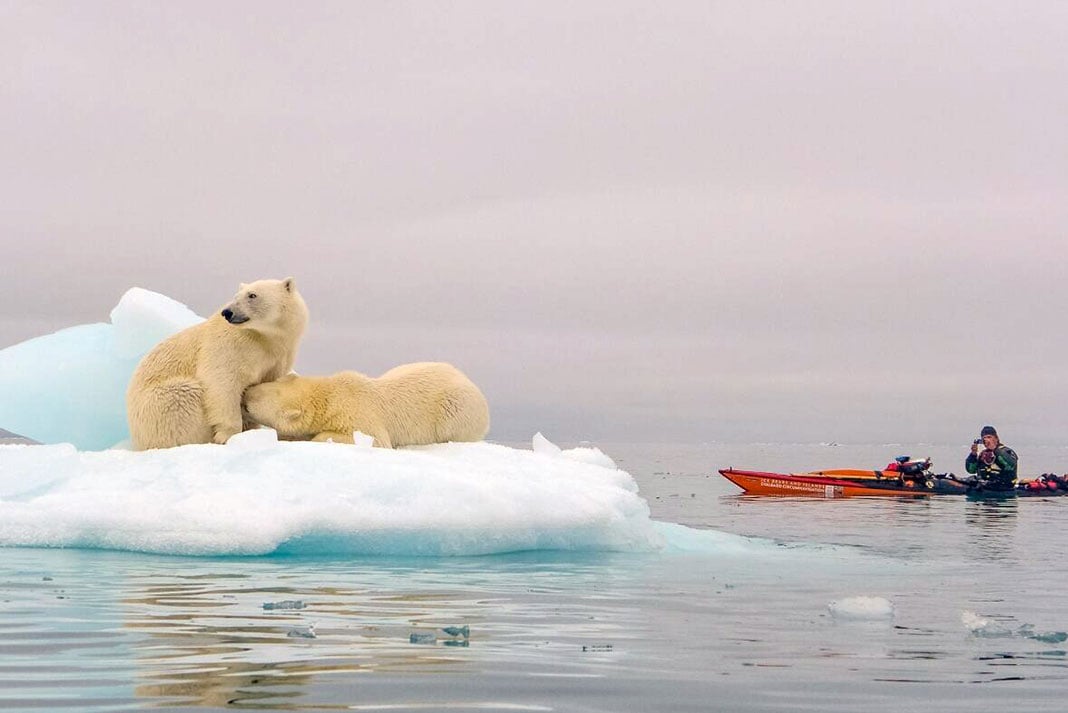
The 3,000 polar bear inhabitants of the Arctic Ocean’s Svalbard archipelago outnumber its human residents. The bears are why the first recorded circumnavigation of Svalbard’s four main islands—by Jaime Sharp, Tara Mulvany and Per Gustav Porsanger in 2015—was preceded by 20 years of failed attempts and near deaths.
“This expedition was not just about whether you can paddle long days but can you manage polar bears and not be eaten—an outcome that ended the previous attempt in 2009,” says Sharp. “Can you paddle 160 kilometers of nonstop glacial cliffs and manage sea ice movements, all encompassed within an already hefty paddle of 2,300 kilometers, over three months, and needing to be completed before winter storms return?”
“The trio was chased by polar bears and had to out-paddle them on the water. Enough said.”
—Editors
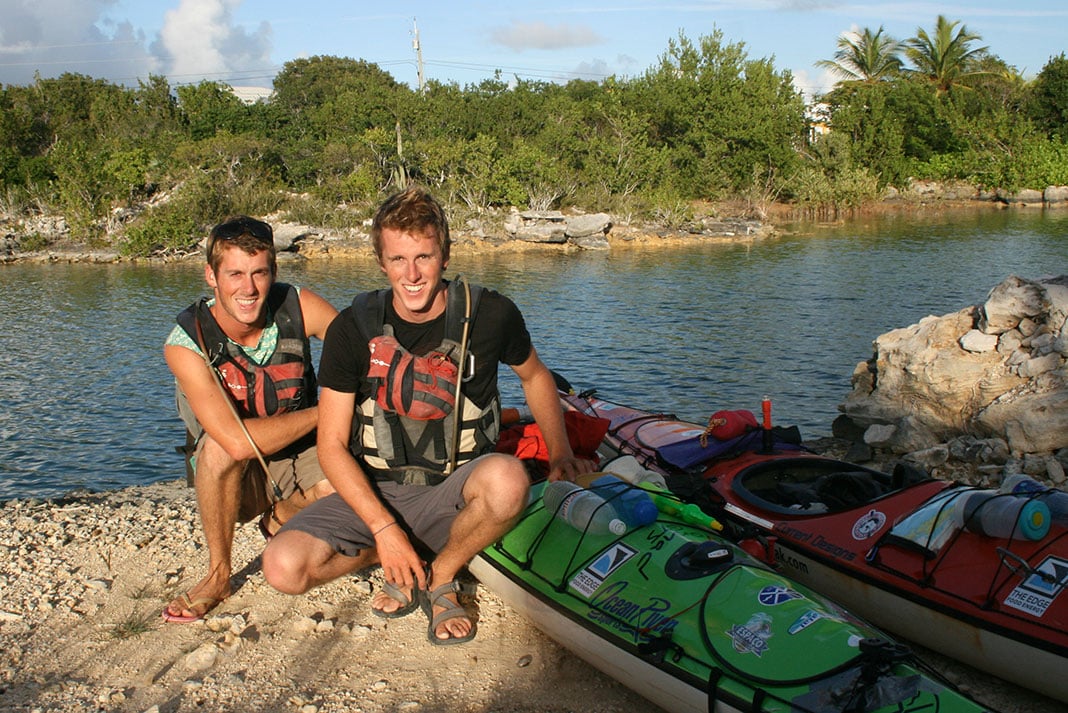
10 Brazil to Florida
In 2014, brothers Russell, 21, and Graham Henry, 23, paddled from Brazil to Florida, charting 6,500 kilometers over seven months. The inspiration was Russell’s expedition planning class at university, which required designing a dream trip. Why not make it a reality?
The two Canadian brothers set out in their Current Designs Nomad GTSs from Belem, Brazil, at the mouth of the Amazon River. After paddling 2,400 kilometers up the South American coastline, they island-hopped up the Lesser Antilles to Anguilla before heading west to the Dominican Republic. From there, they had the two longest crossings of the trip—upward of 150 kilometers—to Turks and Caicos and then Florida.
The journey spanned 25 countries and territories and threw everything imaginable at the brothers, from a diverse and ever-changing cultural landscape to the obvious obstacle of rough sea conditions to the physical demands of paddling stretches of up to 27 hours straight. The brothers avoided pirates, stayed on Richard Branson’s private island, and became the first kayakers since John Dowd’s 1979 expedition to cross the Caribbean Sea. They were also the only paddlers to do so in solo kayaks.
Ten years later, Russell is an expedition guide, and Graham is an attorney. “This trip really cracked open our idea of what we could accomplish, both in the outdoors and in life,” says Graham. “We can shoot big and, no matter the challenge, probably make it work.”
“The Henry brothers did a cool trip. Impressive for their youth. It was a great comparison with a trip we did—they had the technology, and it made such a difference, I could follow them live.”
—John Dowd, 1979 Caribbean crossing
9 & 8 Source to sea on the Amazon
There are endless difficulties in a source-to-sea descent of the Amazon River: complex logistics, class V rapids, subzero temperatures at altitude followed by heavy heat, intense rain and swarming insects, jungle rot, river pirates and drug cartels. That didn’t deter these two impressive 21st-century teams.
In 2012, West Hansen led the first expedition to paddle the 4,200-mile Amazon River from its most distant trickle high in the Peruvian Andes to the Atlantic Ocean in Brazil. The Amazon Express team rafted and kayaked the entire distance in 111 days. “In completing the route, the team helped establish a new source of the Amazon River, objectively recognizing it almost 200 miles longer than the Nile River,” said expedition lead Hansen.
The following year, Darcy Gaechter, Don Beveridge and David Midgley kayaked the length of Amazon River over 148 days. Gaechter was the first—and still only—woman to descend the Amazon source to the sea. And the only vegan, too, she says.
“My whole life, people have told me I can’t, or shouldn’t, do things because of my gender and stature. For example, I wanted to be a raft guide and a kayaker—even though I’m a girl and really little—and people told me it probably wasn’t a great idea,” Gaechter told Paddling Magazine in 2020 about her newly published book, Amazon Woman. “A big motivation for writing my book was to share this story that you can overcome other people’s ideas about you. I hope it will encourage others to figure out their passion and chase it.”
“When Hansen, Gaechter and their teams started their trips, more people had walked on the moon than had traversed the Amazon from source to sea. The number was tied at 12 each when these journeys were complete.”
—Editors
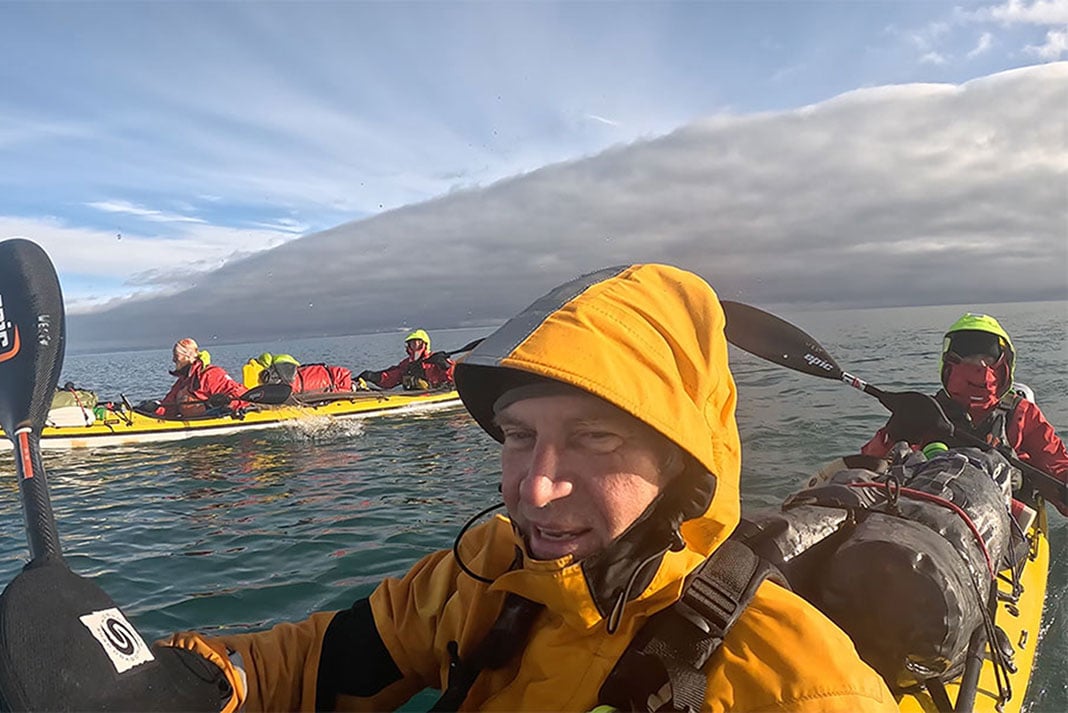
7 The Northwest Passage
Though it has been attempted many times, no recorded expedition had successfully navigated the Northwest Passage by human power in a single season until the Arctic Cowboys team in 2023. For centuries, European sailors sought the route between Baffin Bay and the Beaufort Sea for a quicker trade route to Asia, and the Passage is at the heart of many historical Arctic voyages and expedition lore.
“The conditions were rough. Rescue was precarious and unlikely. There was only one resupply point,” says Cowboys’ expedition leader West Hansen. “Purely self-propelled, the team fended off polar bears, severe storms, team strife and being almost crushed by sea ice twice.” Read more about the Cowboys’ expedition here.
“The Arctic Cowboys’ Northwest Passage trip is an epic journey. It also shows how much the Arctic is changing due to warmth. A journey once impossible to do in one season [due to sea ice] has now been done. It is an impressive feat, though also a sobering one.”
—Jaime Sharp, 2015 Svalbard circumnavigation
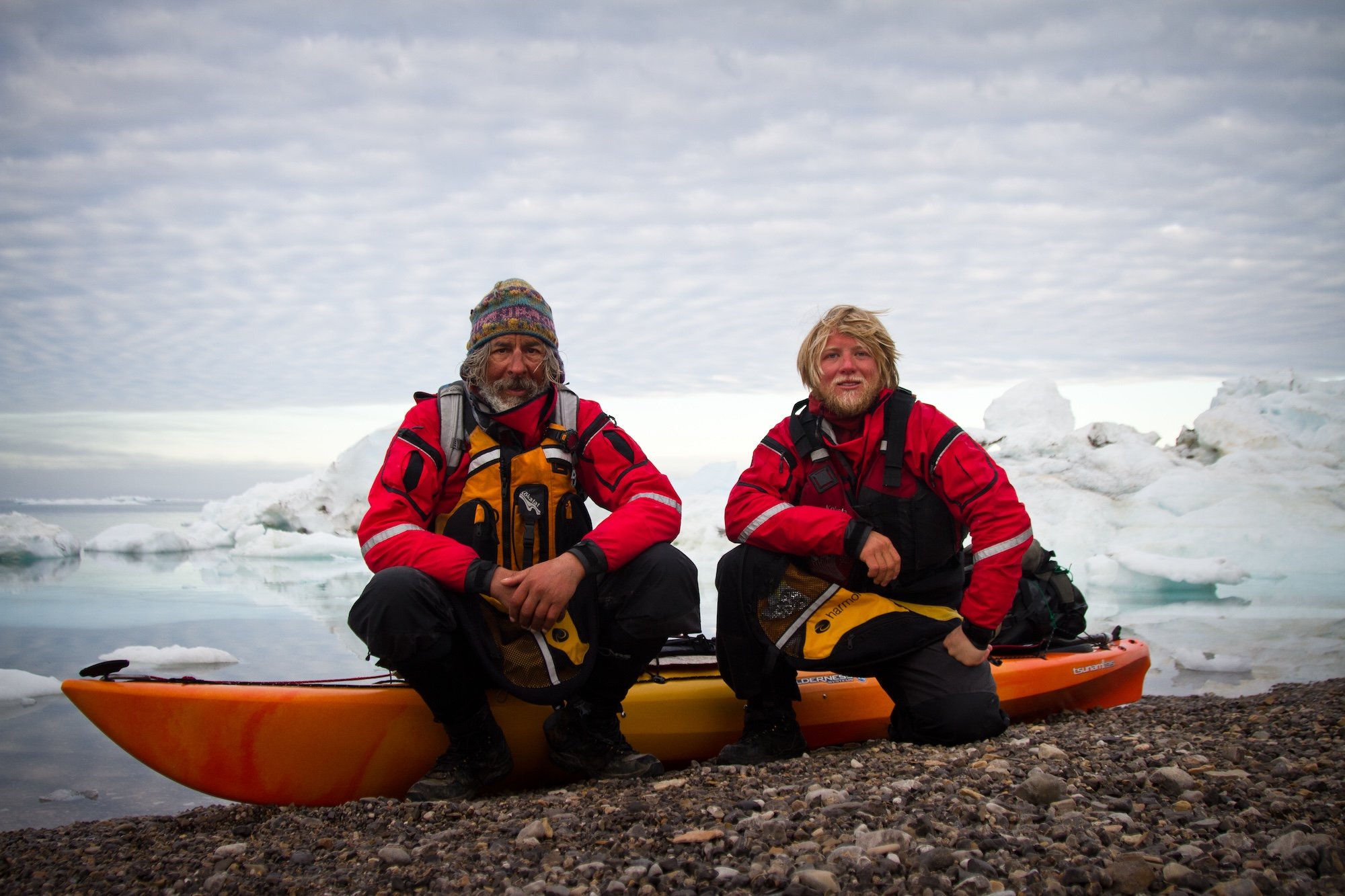
In 2011, Jon Turk and Erik Boomer completed the first circumnavigation of Ellesmere Island in Canada’s Arctic. Nearly the same size as Great Britain, it was a retirement trip for Turk, then 65.
Turk and whitewater kayaker Boomer, 26, began by hauling their 300-pound, 13.5-foot plastic kayaks across 1,300 kilometers of sea ice on skis. On the island’s northeast coast, the ice pack formed 30-foot-high pressure ridges the men were forced to lift and lower their kayaks over. By midsummer, the ice opened, and they could paddle.
During their 104 days, the team had way-too-close encounters with polar bears (one ripped open their tent), walruses (one almost capsized Boomer’s kayak), crushing sea ice and even kidney failure.
“After the first day, I wrote in my journal, ‘Completed: 15 miles. To Go: 1,485.’ Then I took a quick mental survey of all the aches and pains throughout my body and concluded, I’m 65 years old, and there was no way I could complete the circumnavigation,” Turk said to Paddling Magazine after the expedition in 2011. “I thought seriously about saying to Boomer, ‘This is really dumb. I can’t do this. I’m going to turn back tomorrow morning. Sorry.’ But I couldn’t end my career so ignominiously.”
More than three months and 2,200 kilometers later, Turk and Boomer completed the treacherous journey. Read more about the expedition here.
“A really committing, grueling trip with two amazing adventurers.”
—Justine Curgenven, 2014 Aleutian Islands crossing
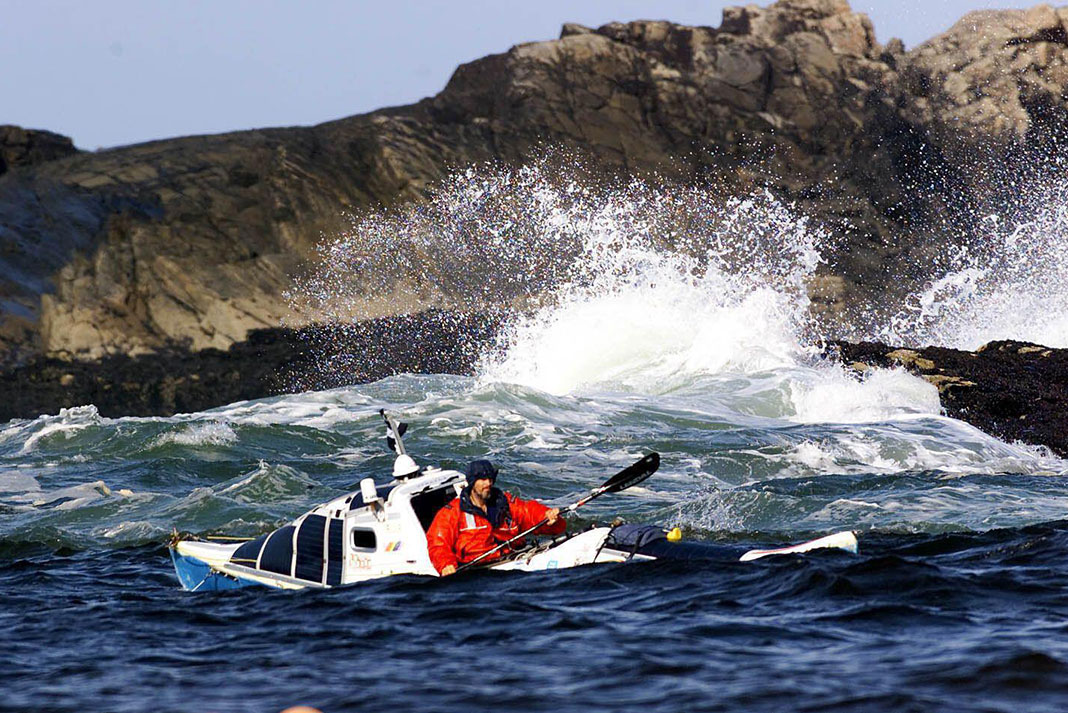
5 North Atlantic crossing
In 2001, Peter Bray, a former special forces sergeant from Cornwall, United Kingdom, embarked on an expedition to cross the North Atlantic solo, paddling from Newfoundland, Canada, to Ireland in a custom-built 27-foot-long kayak.
Bray paddled more than 4,800 kilometers during his 76 days at sea. The journey was marked by treacherous weather conditions, which at times confined him to his six-foot by 30-inch cabin where he lay while waves up to 26 feet crashed over the kayak. Conditions were so abysmal Bray glimpsed the stars on just a single night. He lost 40 pounds, and severe weather repeatedly set him off course and depleted his solar-powered batteries until he was without communication.
Before Bray, only two kayakers had crossed the Atlantic. Both Franz Romer, in 1928, and Hannes Lindemann, in 1956, paddled east to west in modified Kleppers. In crossing west to east, Bray paddled without the help of trade winds.
His successful crossing came on the heels of a disastrous first attempt. In 2000, Bray’s expedition was cut short on its second day. A faulty valve flooded his kayak, leaving him adrift in a leaky life raft and immersed in the frigid North Atlantic for 37 hours while awaiting rescue. It took him months to learn to walk again. But Bray remained undeterred.
“The Atlantic was mind over matter and shows if you put your mind to it, you can achieve your goal. Seventy-six days alone in a kayak. No land,” he reiterates. Bray raised money for two charities along the way.
“His tenacity to try again after his near-fatal first attempt is a testament to true grit.”
—Editors
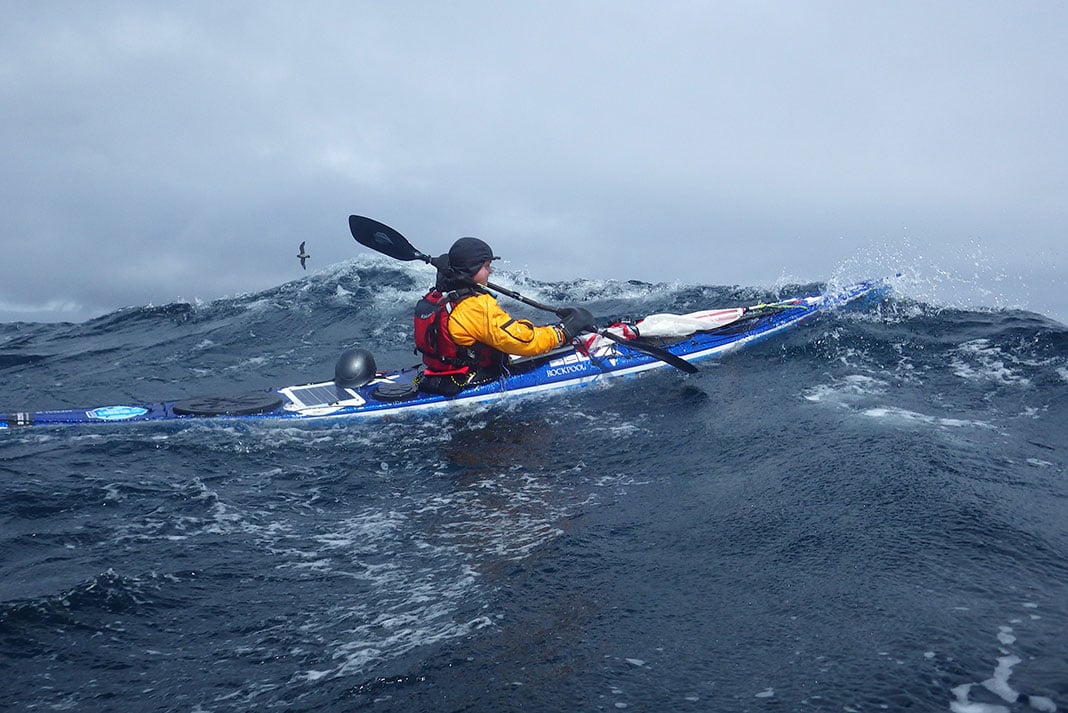
4 Crossing the Aleutians
The notoriously stormy Aleutian Islands chain stretches like a beaded necklace from Russia to Alaska. Justine Curgenven and Sarah Outen’s 2014 journey marked the first modern-day kayak crossing of the 2,500-kilometer remote archipelago. Over 101 days, they confronted more than 20 crossings between sparsely populated islands in cold, remote and rough seas—they also contended with bears and Outen’s inexperience. “We had three days of crossings where we paddled over 47 nautical miles (87 kilometers), and each took more than 15 hours,” says Curgenven.
“The Aleutians was a very, very good expedition. There are big tidal rips and very steep waves when the tide changes. You have a big wave of water, 29,000 feet deep, washing up onto a shallow continental shelf. It stacks up with nowhere to go. Hats off to Justine.”
—Jon Turk, 2000 Pacific Rim crossing
As if that wasn’t enough, Curgenven added a new dimension of challenge by filming the entire expedition. The adventure is captured in the feature-length Kayaking The Aleutians. The three-month adventure was just a chapter in Outen’s ambitious six-year quest to circumnavigate the globe using human power—kayaking, rowing and cycling, primarily solo.
“I am likely biased because I was part of it and know how challenging it was to kayak with a relative beginner kayaker on multiple uncharted crossings in one of the stormiest places on Earth, hundreds of miles from outside help,” says Curgenven. “Sarah is an example of what you can do with resilience and determination.”
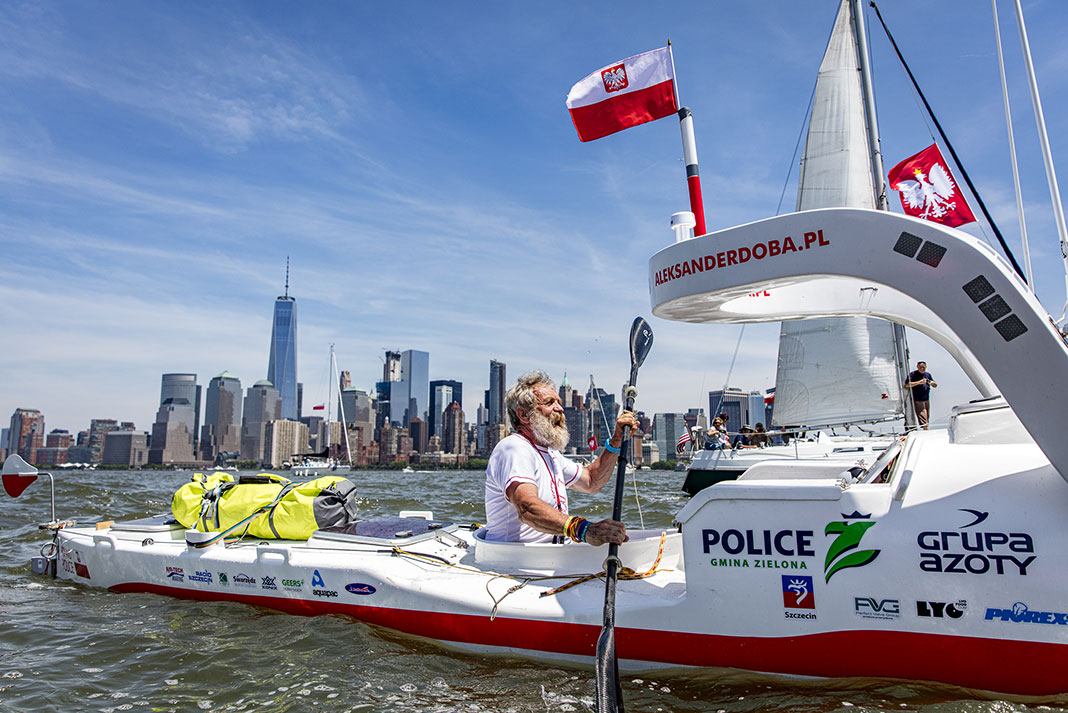
3 Atlantic hat trick
Bronzed, bearded and sinewy, Polish grandfather Aleksander Doba (1946–2021) paddled across the Atlantic three times, and he did it all in his seventh decade. The first expedition was from Senegal to Brazil over 99 days in 2011, the second from Portugal to Florida over 167 days in 2014, and finally from New Jersey to France over 110 days in 2017, at the age of 70.
“On the first expedition, I faced more than 50 tropical storms; otherwise, it was pretty quiet. The second crossing was more than twice as long and much more difficult. I lost communication for 47 days. I was plagued by strong winds that trapped me for 40 nights in the Bermuda Triangle. Then a storm broke the kayak’s rudder,” Doba told Paddling Magazine in 2014. On the same voyage, his desalinator broke, forcing him to hand pump water four hours a day.
Things often didn’t go according to plan on Doba’s expeditions. Repairs required all his ingenuity as a retired mechanical engineer. Storms blew him all over, but often backward. Saltwater, heat and humidity irritated his skin, so he sometimes paddled naked. His 23-foot-long, self-righting kayak weighed nearly 1,500 pounds when loaded with supplies and required Doba to sleep in a fetal position in the boat’s airtight cabin, which he affectionately called the casket.
Storms were frequent and Doba often faced waves over 21 feet high. But he was joyful for the adventure, fearful of being “an average old man with nothing going on.” Living life to the fullest until the very end, Doba died on the summit of Mount Kilimanjaro at the age of 74.
“He was crazy enough to do it not once but three times. Nobody else has done that. And he was 70 years young during his third Atlantic crossing—he encouraged older people to get up off the couch and do something exciting with life.”
—Piotr Chmielinski, 1985 Amazon River first descent
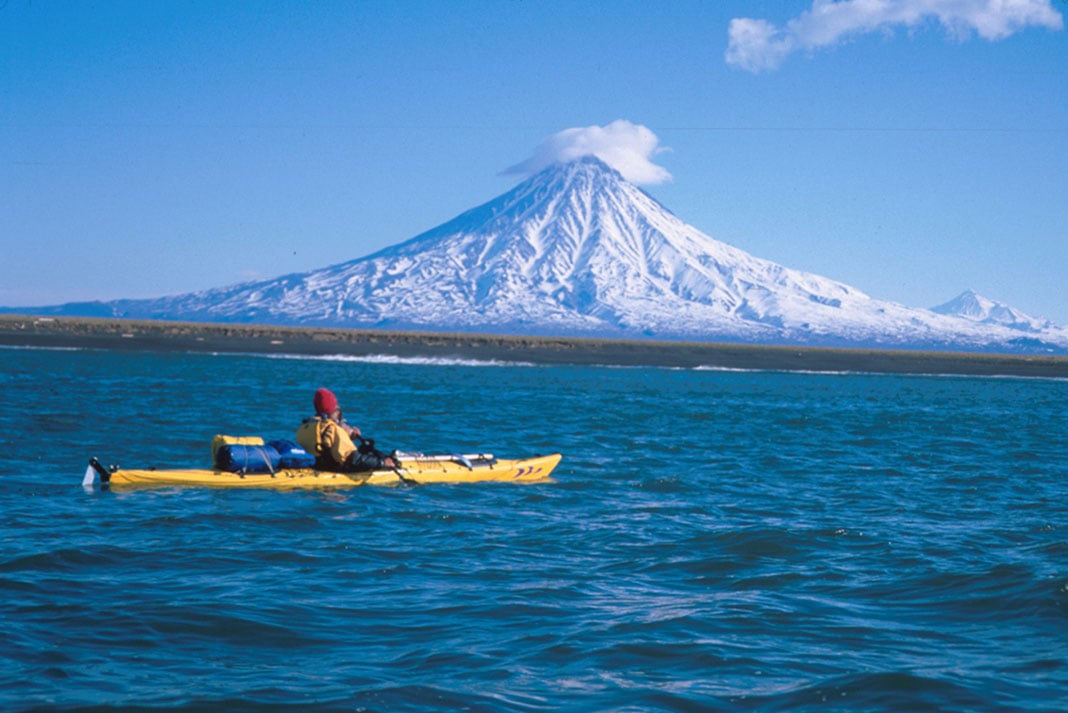
2 Japan to Alaska
Beginning in 1999 and finishing in late 2000, Jon Turk traveled 4,800 kilometers across the North Pacific, from the northern tip of Hokkaido, Japan, along Siberia’s Kuril Islands and Kamchatka Peninsula to the 65th parallel and crossed to Alaska. The expedition is one of the most legendary kayak journeys of all time. It also tested the hypothesis Stone Age humans migrated by paddlecraft from modern-day Japan to North America, which Turk wrote about in his book, In The Wake of the Jomon.
“It’s some of the most tempestuous waters in the world,” says Turk, who sailed a small trimaran in the expedition’s first season and paddled a 17-foot Prijon Kodiak in its second. Turk and expedition partner Franz Helfenstein were caught in a whirlpool for 36 hours during the first leg of the journey. Turk was joined by Chris Seashore and Misha Petrov for the expedition’s second season. Of the 18-hour crossing to St. Lawrence Island in the Bering Strait, Turk says: “The current was pushing us, the winds were coming up, and we were getting blown off. We fought for our lives on that one.”
“Greatest due to the remoteness, especially long crossings, technical paddling with surf landings, general exposure, and overall logistics. It’s also a great story.”
—Frank Wolf, expedition paddler
“When I think back, I think of the storms, the coastlines, the fatigue; all those things happen on any long sea kayak expedition,” says Turk, who is now 78 and spent last winter in Arizona, living out of his van with his wife and mountain biking every day. “But I also think of my transformational relationship with nature. At the time, I was sponsored by The North Face and Polartec and thought this expedition would further my career. I ended up a dramatically changed person instead.” Turk returned to Siberia for the following five years to explore the connection between science, wilderness and mysticism, which he wrote about in his book, The Raven’s Gift.
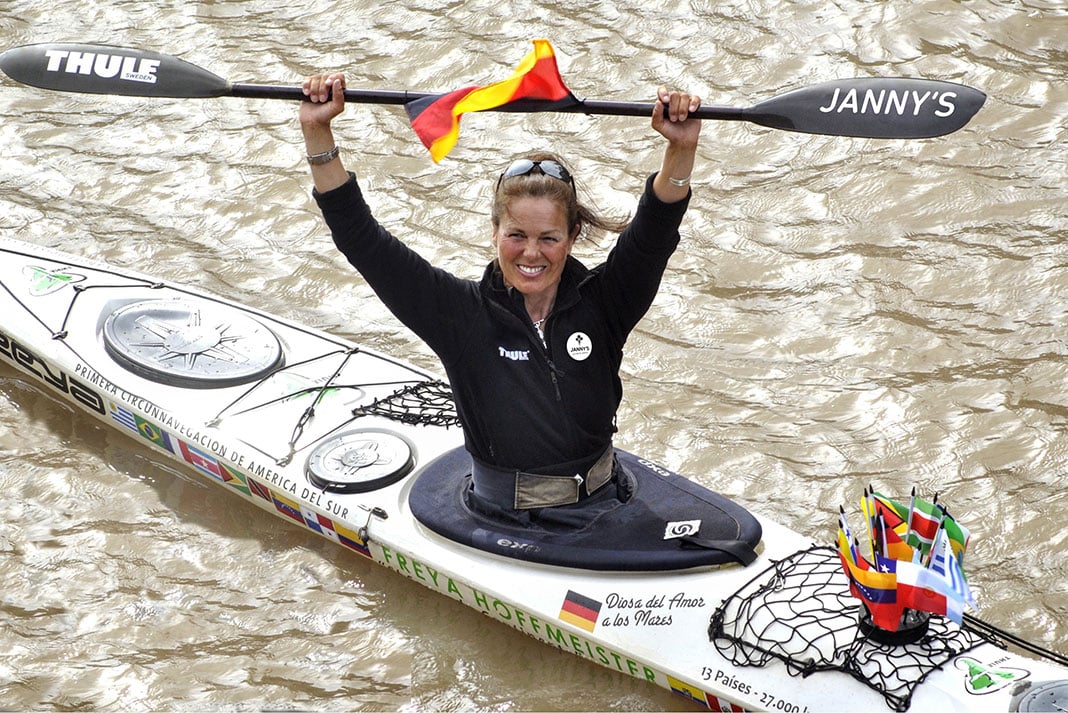
1 Around South America
Freya Hoffmeister’s record-smashing expeditions—mostly solo and unsupported—have taken her around countries and continents. The self-described Goddess of Love to the Seas has probably logged more expedition miles than any paddler ever. Hoffmeister set records around Iceland and New Zealand’s south island in 2007 and Australia in 2009. Between 2011 and 2015, her 27,000-kilometer circumnavigation of South America spanned 13 countries, stretching from the Panama Canal to Cape Horn, and crossed the equator twice. She spent most nights in a tent and was self-sufficient for weeks at a time. Hoffmeister took two breaks between legs of her journey to recuperate back in Germany, where she owns two ice cream shops.
There were many intense moments on Hoffmeister’s South American epic: one was an emergency crash landing and waiting out 60-knot winds near Cape Horn, the infamous southernmost tip of South America. Brazil’s Pororoca tidal bore at the mouth of the Amazon was another: “I thought I would wait for the tide coming in, but it came in rough. Within 15 minutes, it had side-surfed me for eight kilometers. I was afraid for my life.”
“It is an incomparable trip and will never be achieved again—as much as my ongoing circumnavigation of North America,” says Hoffmeister, 59, who is now roughly halfway through a 48,000-kilometer, decade-long journey to circumnavigate the North American continent.
“For the scale, ambition and dogged determination, plus the fact no one else has even attempted such a long undertaking—Freya’s overall goal of ticking off the continents one by one is unparalleled.”
—Justine Curgenven, 2014 Aleutian Islands crossing
How expeditions were ranked
Paddling Mag curated this list based on nominations gathered from a panel of accomplished expedition paddlers. The number of nominations received determined each expedition’s ranking on the list.
The nomination of this expedition paddler was nearly unanimous—can you guess who? | Feature photo: Jaime Sharp


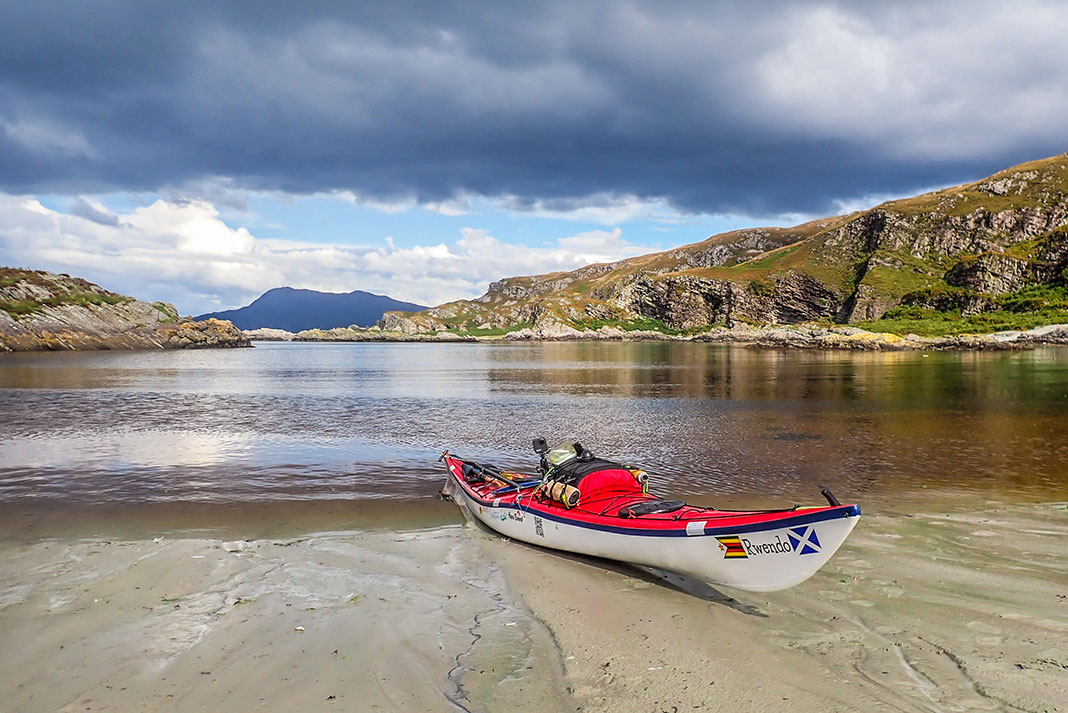

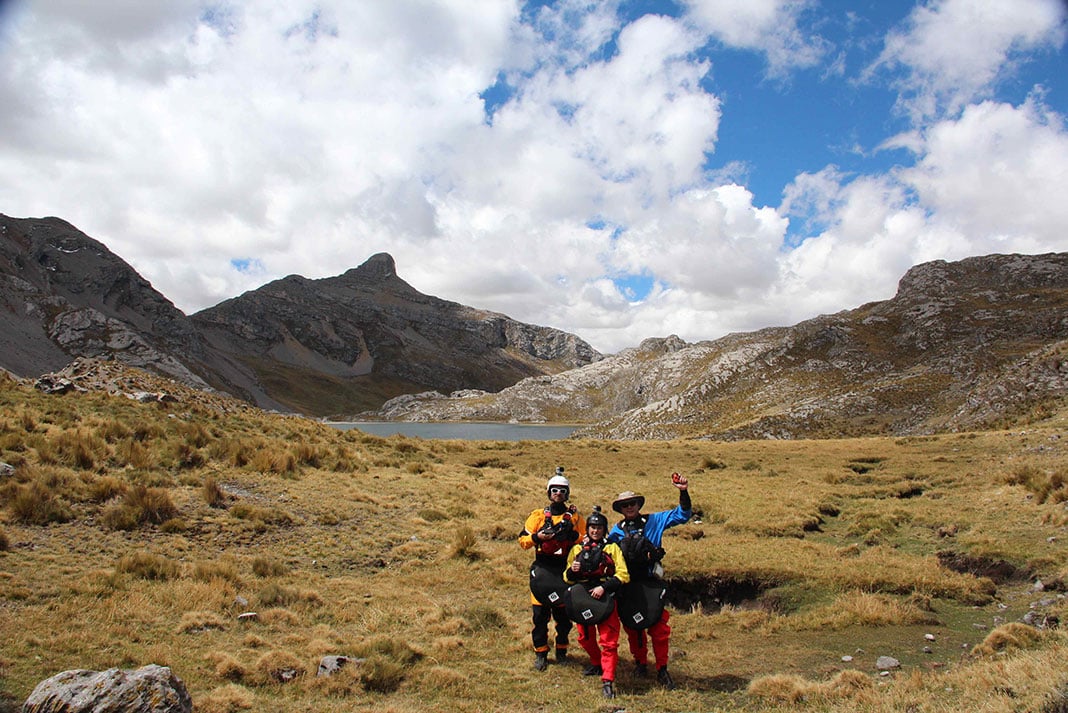

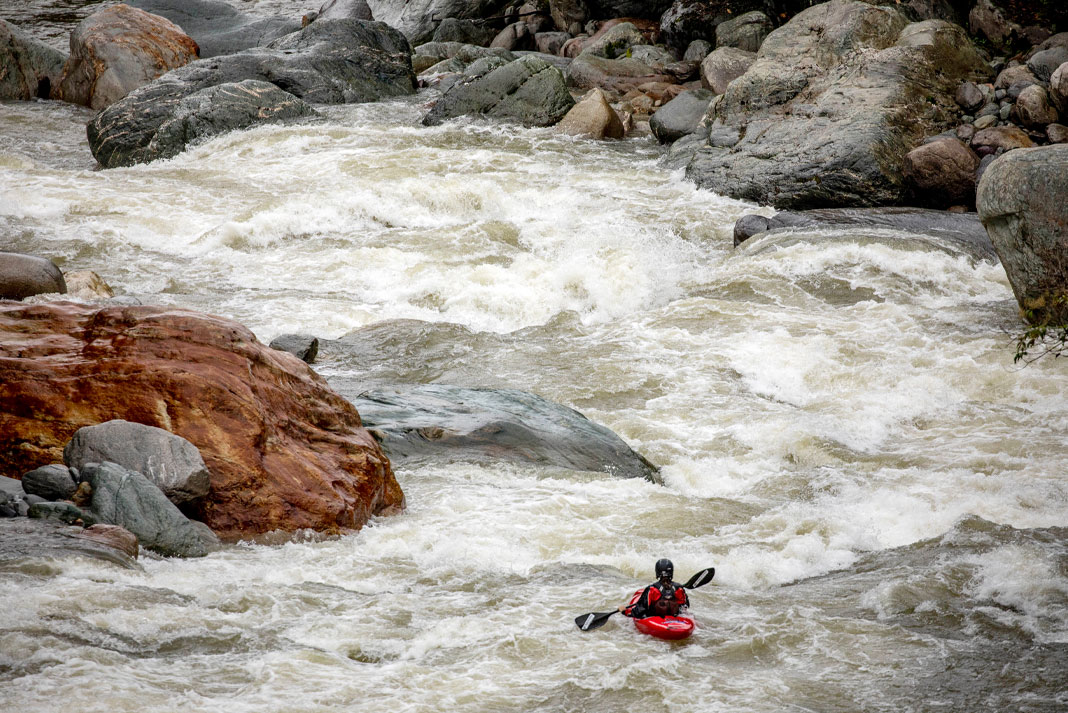
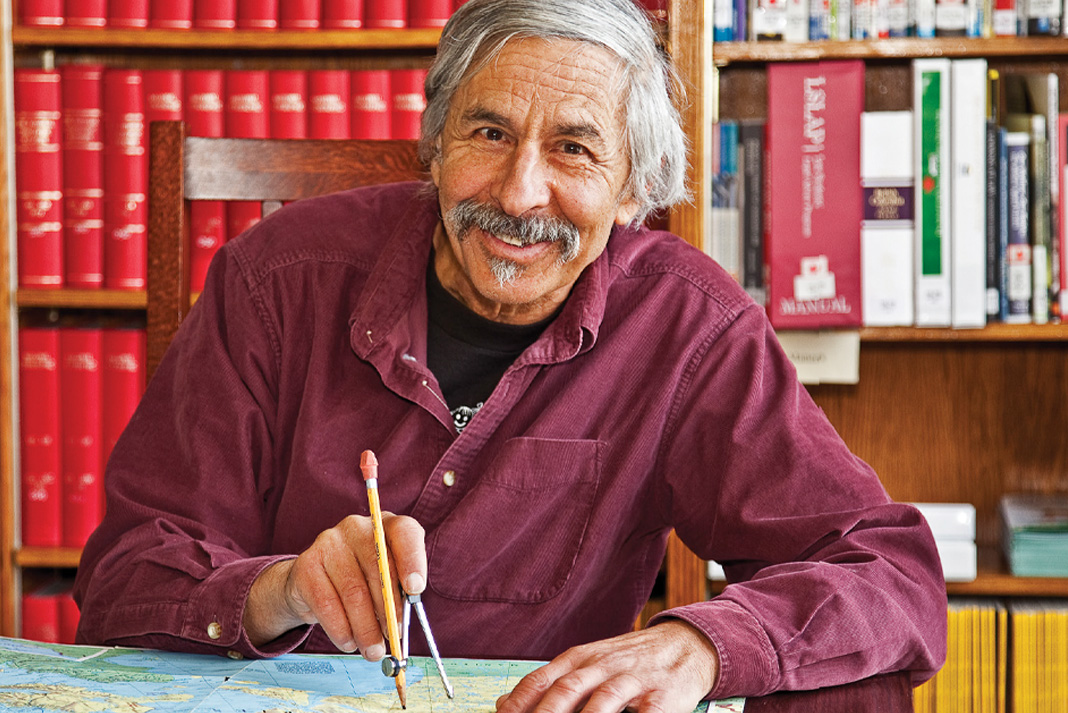
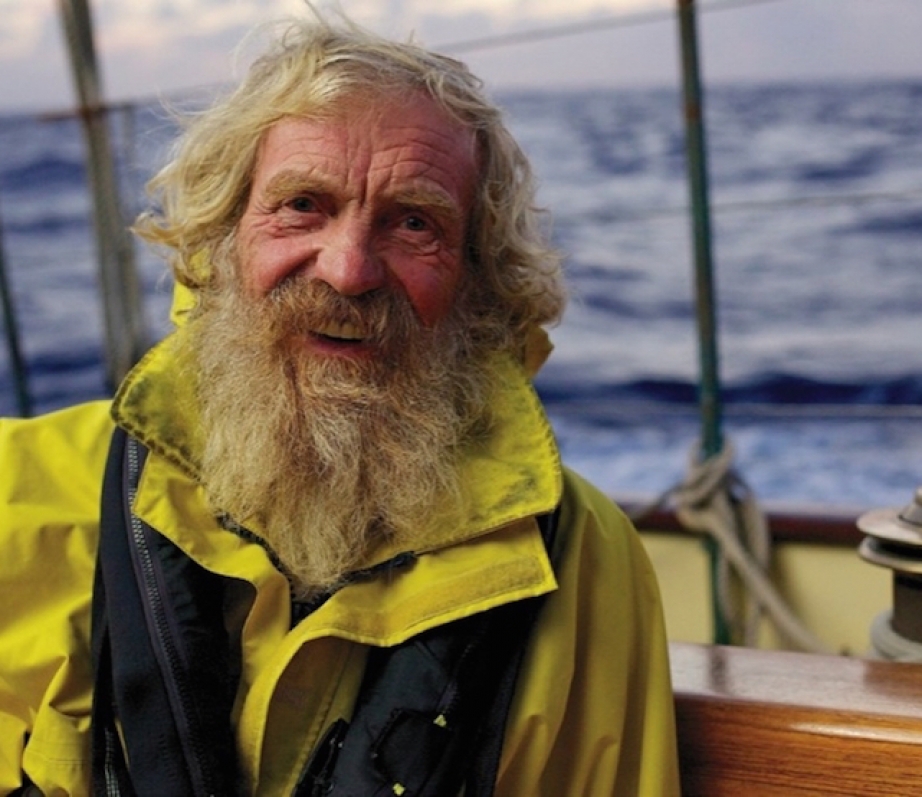
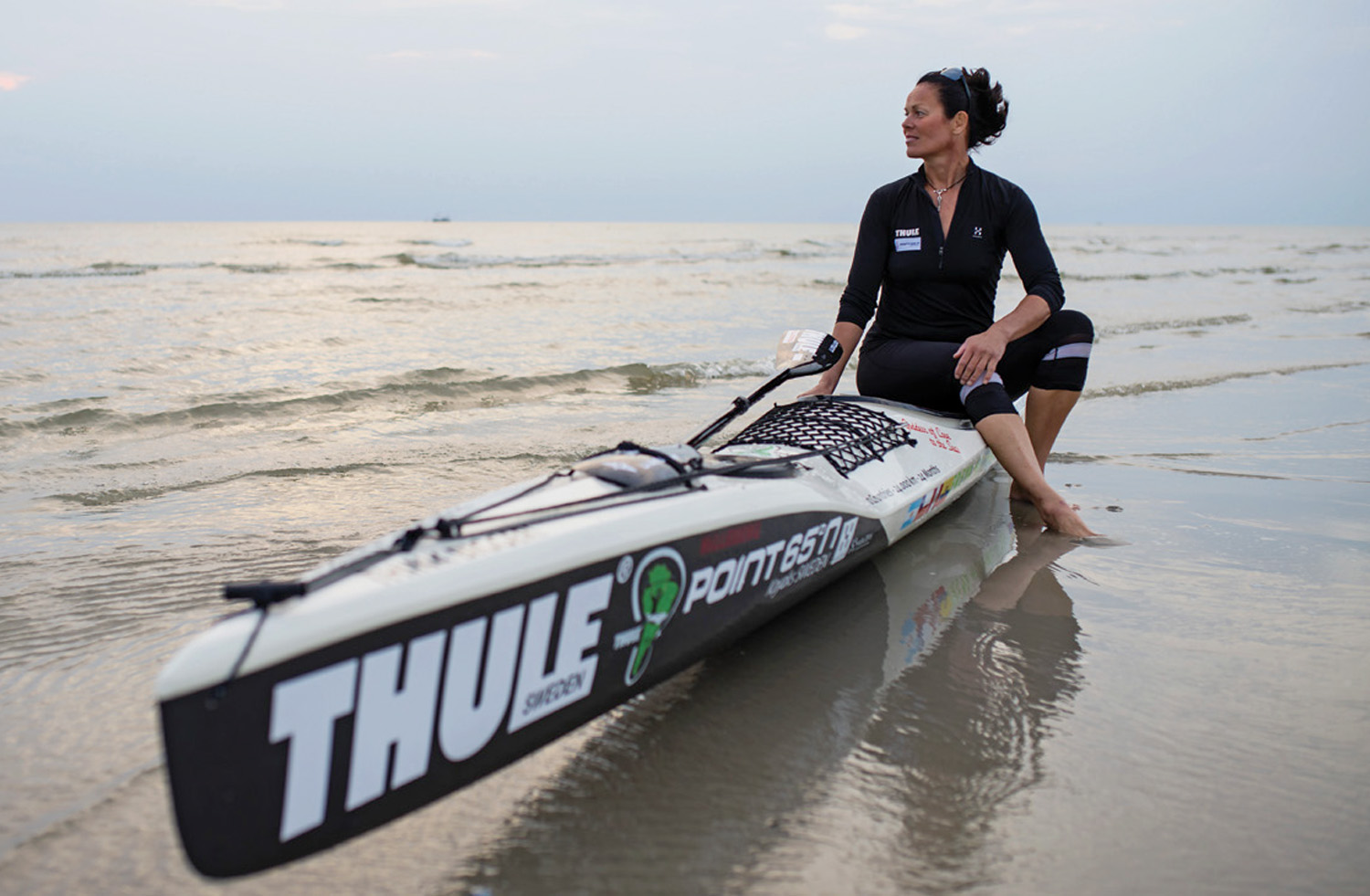
 This article was first published in the Spring 2024 issue of Paddling Magazine.
This article was first published in the Spring 2024 issue of Paddling Magazine. 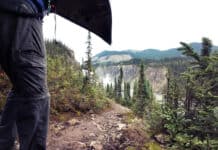
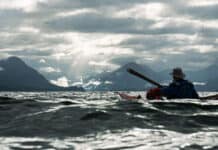
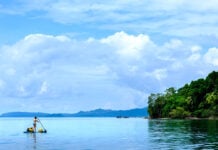




Missing the story of Hannes Lindemann on a folding Klepper who paddled solo from Africa to Carinbbean
amazing!…
Good article with some amazing journeys, but , Paul Caffyn is missing. Summary of his expeditions reproduced below.
By far the the most extreme, circumnavigation is Australia, unsupported. Big seas, long distances, sharks and saltwater crocs.
A true legend.
Best regards, Nigel
1978 Circumnavigation of the South Island, New Zealand
The expedition around the South Island started as an expedition along the Fiordland coast with fellow paddler Max Reynolds. Caffyn continued solo and with ground support to complete the circumnavigation in 76 days.{ source: Obscured by waves}
1978/79 Circumnavigation of the North Island, New Zealand
Caffyn sea kayaked solo around the North Island, with ground party support. The circumnavigation took 86 days, after which Caffyn undertook a crossing of Cook Strait by sea kayak.{source: Cresting the Restless Wave}
1979 Circumnavigation of Stewart Island, New Zealand
The expedition around Stewart Island was done with Max Reynolds, August and September 1979. This expedition departed from Bluff, New Zealand starting with a crossing of Foveaux Strait. { source: Dark Side of the Wave}
1980 Circumnavigation of Great Britain
Caffyn and Nigel Dennis circumnavigated Great Britain by sea kayak in 85 days.
1981/82 Circumnavigation of Australia
1985 solo circumnavigation of the four main islands of Japan
1991 completed the first solo sea kayak trip along the entire coastline of Alaska
1997 Circumnavigation of New Caledonia
Definitely worthy of note (and a lovely guy) but this article is focused on expeditions since 2000 only.
Richard Barnes paddled solo Australia to New Zealand 2023.
Amazing …